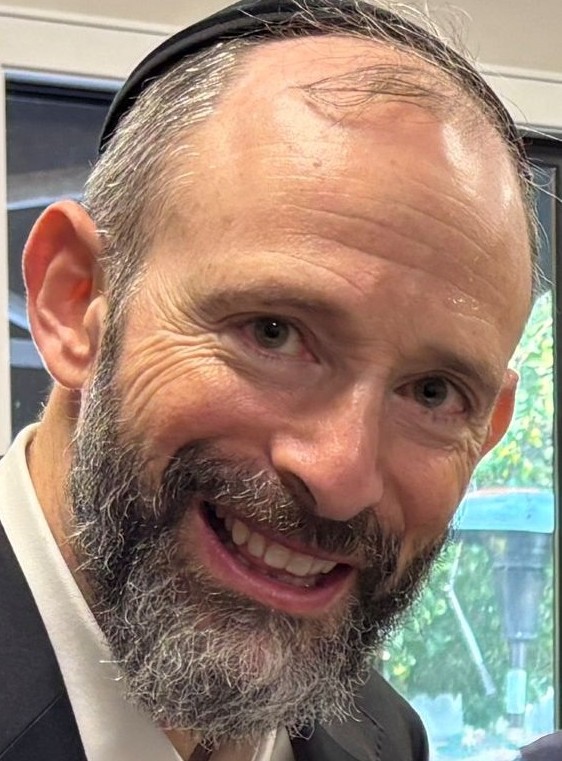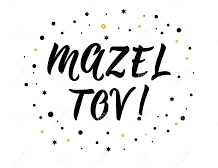Note: The following information is contained in the Wikipedia website. This is not an exact copy of all the information found on the Wikipedia website, nor do we take responsibility for updating this information. For the complete and current information contained in the Wikipedia website, please go onto the Wikipedia website.
From Wikipedia, the free encyclopedia
http://en.wikipedia.org/wiki/Wikipedia:Copyrights
This page documents an official policy on the English Wikipedia. It has wide acceptance among editors and is considered a standard that all users should follow. When editing this page, please ensure that your revision reflects consensus. When in doubt, discuss first on the talk page. |
|
This page is part of a series about |
Policy and information Wikipedia copyright information Processes Items with copy-issues |
Important note:The Wikimedia Foundation does not own copyright on Wikipedia article texts and illustrations. It is therefore useless to email our contact addresses asking for permission to reproduce content. Permission to reproduce content under the license and technical conditions applicable to Wikipedia (see below and Wikipedia:Mirrors and forks) has already been granted to everyone without request; for permission to use it outside these terms, one must contact all the volunteer authors of the text or illustration in question.
The license Wikipedia uses grants free access to our content in the same sense as free software is licensed freely. This principle is known as copyleft. That is to say, Wikipedia content can be copied, modified, and redistributed so long as the new version grants the same freedoms to others and acknowledges the authors of the Wikipedia article used (a direct link back to the article satisfies our author credit requirement). Wikipedia articles therefore will remain free forever and can be used by anybody subject to certain restrictions, most of which serve to ensure that freedom.
To fulfill the above goals, the text contained in Wikipedia is copyrighted (automatically under the Berne Convention) by Wikipedia contributors and licensed to the public under the GNU Free Documentation License (GFDL). The full text of this license is at Wikipedia:Text of the GNU Free Documentation License. This text should not be changed for legal reasons.
Permission is granted to copy, distribute and/or modify this document under the terms of the GNU Free Documentation License, Version 1.2 or any later version published by the Free Software Foundation; with no Invariant Sections, with no Front-Cover Texts, and with no Back-Cover Texts.
A copy of the license is included in the section entitled "GNU Free Documentation License".
Content on Wikipedia is covered by disclaimers.
The English text of the GFDL is the only legally binding document; what follows is our interpretation of the GFDL: the rights and obligations of users and contributors.
IMPORTANT: If you want to reuse content from Wikipedia, first read the Reusers' rights and obligations section. You should then read the GNU Free Documentation License.
Contributors' rights and obligations
If you contribute material to Wikipedia, you thereby license it to the public under the GFDL (with no invariant sections, front-cover texts, or back-cover texts). In order to contribute, you must be in a position to grant this license, which means that either
- you hold the copyright to the material, for instance because you produced it yourself, or
- you acquired the material from a source that allows the licensing under GFDL, for instance because the material is in the public domain or is itself published under GFDL.
In the first case, you retain copyright to your materials. You can later republish and relicense them in any way you like. However, you can never retract the GFDL license for the copies of materials that you place here; these copies will remain under GFDL forever.
In the second case, if you incorporate external GFDL materials, as a requirement of the GFDL, you need to acknowledge the authorship and provide a link back to the network location of the original copy.
Using copyrighted work from others
All works are copyrighted unless either they fall into the public domain or their copyright is explicitly disclaimed. If you use part of a copyrighted work under "fair use", or if you obtain special permission to use a copyrighted work from the copyright holder under the terms of our license, you must make a note of that fact (along with names and dates). It is our goal to be able to freely redistribute as much of Wikipedia's material as possible, so original images and sound files licensed under the GFDL or in the public domain are greatly preferred to copyrighted media files used under fair use. See Wikipedia:Boilerplate request for permission for a form letter asking a copyright holder to grant us a license to use their work under terms of the GFDL.
Never use materials that infringe the copyrights of others. This could create legal liabilities and seriously hurt the project. If in doubt, write it yourself.
Note that copyright law governs the creative expression of ideas, not the ideas or information themselves. Therefore, it is legal to read an encyclopedia article or other work, reformulate the concepts in your own words, and submit it to Wikipedia. However, it would still be unethical (but not illegal) to do so without citing the original as a reference. See plagiarism and fair use for discussions of how much reformulation is necessary in a general context.
Linking to copyrighted works
Since most recently-created works are copyrighted, almost any Wikipedia article which cites its sources will link to copyrighted material. It is not necessary to obtain the permission of a copyright holder before linking to copyrighted material -- just as an author of a book does not need permission to cite someone else's work in their bibliography. Likewise, Wikipedia is not restricted to linking only to GFDL-free or open-source content.
However, if you know that an external Web site is carrying a work in violation of the creator's copyright, do not link to that copy of the work. Knowingly and intentionally directing others to a site that violates copyright has been considered a form of contributory infringement in the United States (Intellectual Reserve v. Utah Lighthouse Ministry). Linking to a page that illegally distributes someone else's work sheds a bad light on Wikipedia and its editors. The copyright status of Internet archives in the United States is unclear, however. It is currently acceptable to link to Internet archives such as the Wayback Machine.
If you find a copyright infringement
If you suspect a copyright infringement, you should at the very least bring up the issue on that page's talk page. Others can then examine the situation and take action if needed. The most helpful piece of information you can provide is a URL or other reference to what you believe may be the source of the text.
Some cases will be false alarms. For example, if the contributor was in fact the author of the text that is published elsewhere under different terms, that does not affect their right to post it here under the GFDL. Also, sometimes you will find text elsewhere on the Web that was copied from Wikipedia. In both of these cases, it is a good idea to make a note in the talk page to discourage such false alarms in the future.
If some of the content of a page really is an infringement, then the infringing content should be removed, and a note to that effect should be made on the talk page, along with the original source. If the author's permission is obtained later, the text can be restored.
If all of the content of a page is a suspected copyright infringement, then the page should be listed on Wikipedia:Copyright problems and the content of the page replaced by the standard notice which you can find there. If, after a week, the page still appears to be a copyright infringement, then it may be deleted.
In extreme cases of contributors continuing to post copyrighted material after appropriate warnings, such users may be blocked from editing to protect the project.
Image guidelines
Images and photographs, like written works, are subject to copyright. Someone holds the copyright unless they have been explicitly placed in the public domain. Images on the internet need to be licensed directly from the copyright holder or someone able to license on their behalf. In some cases, fair use guidelines may allow a photograph to be used.
Image description pages must be tagged with a special tag to indicate the legal status of the images, as described at Wikipedia:Image copyright tags. Untagged or incorrectly-tagged images will be deleted. It is currently unclear what should happen in cases where the same image has been uploaded more than once with different respective copyright statements.
U.S. government photographs
Works produced by civilian and military employees of the United States federal government in the scope of their employment are public domain by statute.
However, not every work republished by the U.S. government falls into this category. The U.S. government can own copyrights that are assigned to it by others -- for example, works created by contractors.
Moreover, images and other media found on .mil and .gov websites may be using commercial stock photography owned by others. It may be useful to check the privacy and security notice of the website, but only with an email to the webmaster can you be confident that an image is in the public domain.
It should also be noted that governments outside the U.S. often do claim copyright over works produced by their employees (for example, Crown copyright in the United Kingdom ). Also, most state and local governments in the United States do not place their work into the public domain and do in fact own the copyright to their work. Please be careful to check copyright information before copying.
Source
United States Code; Title 17; Chapter 1; § 105 Subject matter of copyright; United States Government works.
Copyright protection under this title is not available for any work of the United States Government, but the United States Government is not precluded from receiving and holding copyrights transferred to it by assignment, bequest, or otherwise.
US Code
Introducing invariant sections or cover texts in Wikipedia
Under Wikipedia's current copyright conditions, and with the current facilities of the MediaWiki software, it is only possible to include in Wikipedia external GFDL materials that contain invariant sections or cover texts, if all of the following apply,
- You are the copyright holder of these external GFDL materials (or: you have the explicit, i.e. written, permission of the copyright holder to do what follows);
- The length and nature of these invariant sections and cover texts does not exceed what can be placed in an edit summary;
- You are satisfied that these invariant sections and cover texts are not listed elsewhere than in the "page history" of the page where these external materials are placed;
- You are satisfied that further copies of Wikipedia content are distributed under the standard GFDL application of "with no Invariant Sections, with no Front-Cover Texts, and with no Back-Cover Texts" (in other words, for the copies derived from wikipedia, you agree that these parts of the text contributed by you will no longer be considered as "invariant sections" or "cover texts" in the GFDL sense);
- The original invariant sections and/or cover texts are contained in the edit summary of the edit with which you introduce the thus GFDLed materials in wikipedia (so, that if "permanent deletion" would be applied to that edit, both the thus GFDLed material and its invariant sections and cover texts are jointly deleted).
Seen the stringent conditions above, it is very desirable to replace GFDL texts with invariant sections (or with cover texts) by original content without invariant sections (or cover texts) whenever possible.
Reusers' rights and obligations
If you want to use Wikipedia materials in your own books/articles/web sites or other publications, you can do so, but you have to follow the GFDL. If you are simply duplicating the Wikipedia article, you must follow section two of the GFDL on verbatim copying, as discussed at Wikipedia:Verbatim copying.
If you create a derivative version by changing or adding content, this entails the following:
- your materials in turn have to be licensed under GFDL,
- you must acknowledge the authorship of the article (section 4B), and
- you must provide access to the "transparent copy" of the material (section 4J). (The "transparent copy" of a Wikipedia article is any of a number of formats available from us, including the wiki text, the html web pages, xml feed, etc.)
You may be able to partially fulfill the latter two obligations by providing a conspicuous direct link back to the Wikipedia article hosted on this website. You also need to provide access to a transparent copy of the new text. However, please note that the Wikimedia Foundation makes no guarantee to retain authorship information and a transparent copy of articles. Therefore, you are encouraged to provide this authorship information and a transparent copy with your derived works.
Example notice
An example notice, for an article that uses the Wikipedia article Metasyntactic variable might read as follows:
This article is licensed under the GNU Free Documentation License. It uses material from the Wikipedia article "Metasyntactic variable".
("Metasyntactic variable" and the URLs enclosed in the above must of course be substituted as necessary.)
Alternatively you can distribute your copy of "Metasyntactic variable" and list at least five (or all if fewer than five) principal authors on the title page (or top of the document), as explained in the text of the GFDL license. The external Page History Stats tool can help you identify the principal authors. All (re-)distributed documents need to include a copy of the GFDL license text.
Fair use materials and special requirements
All original Wikipedia text is distributed under the GFDL. Wikipedia articles may also include quotations, images, or other media under the U.S. Copyright law "fair use" doctrine in accordance with our guidelines for non-free content. It is preferred that these be obtained under the most free content license practical (such as the GFDL or public domain). In cases where no such images/sounds are currently available, then fair use may be used in certain circumstances as described in the criteria for using non-free media.
In Wikipedia , such "fair use" material should be identified as from an external source (on the image description page, or history page, as appropriate). This also leads to possible restrictions on the use, outside of Wikipedia, of such "fair use" content retrieved from Wikipedia: this "fair use" content does not fall under the GFDL license as such, but under the "fair use" (or similar/different) regulations in the country where the media are retrieved.
Wikipedia does use some text under licenses that are compatible with the GFDL but may require additional terms that we do not require for original Wikipedia text (such as including Invariant Sections, Front-Cover Texts, or Back-Cover Texts). When wanting to contribute such texts that include Invariant Sections or Cover Texts to Wikipedia, see Introducing invariant sections or cover texts in Wikipedia above.
If you are the owner of Wikipedia-hosted content being used without your permission
If you are the owner of content that is being used on Wikipedia without your permission, then you may request the page be immediately removed from Wikipedia; see Request for immediate removal of copyright violation. You can also contact our designated agent to have it permanently removed, but it may take up to a week for the page to be deleted that way (you may also blank the page and replace it with the words {{copyvio|URL or place you published the text}} but the text will still be in the page history). Either way, we will, of course, need some evidence to support your claim of ownership.








